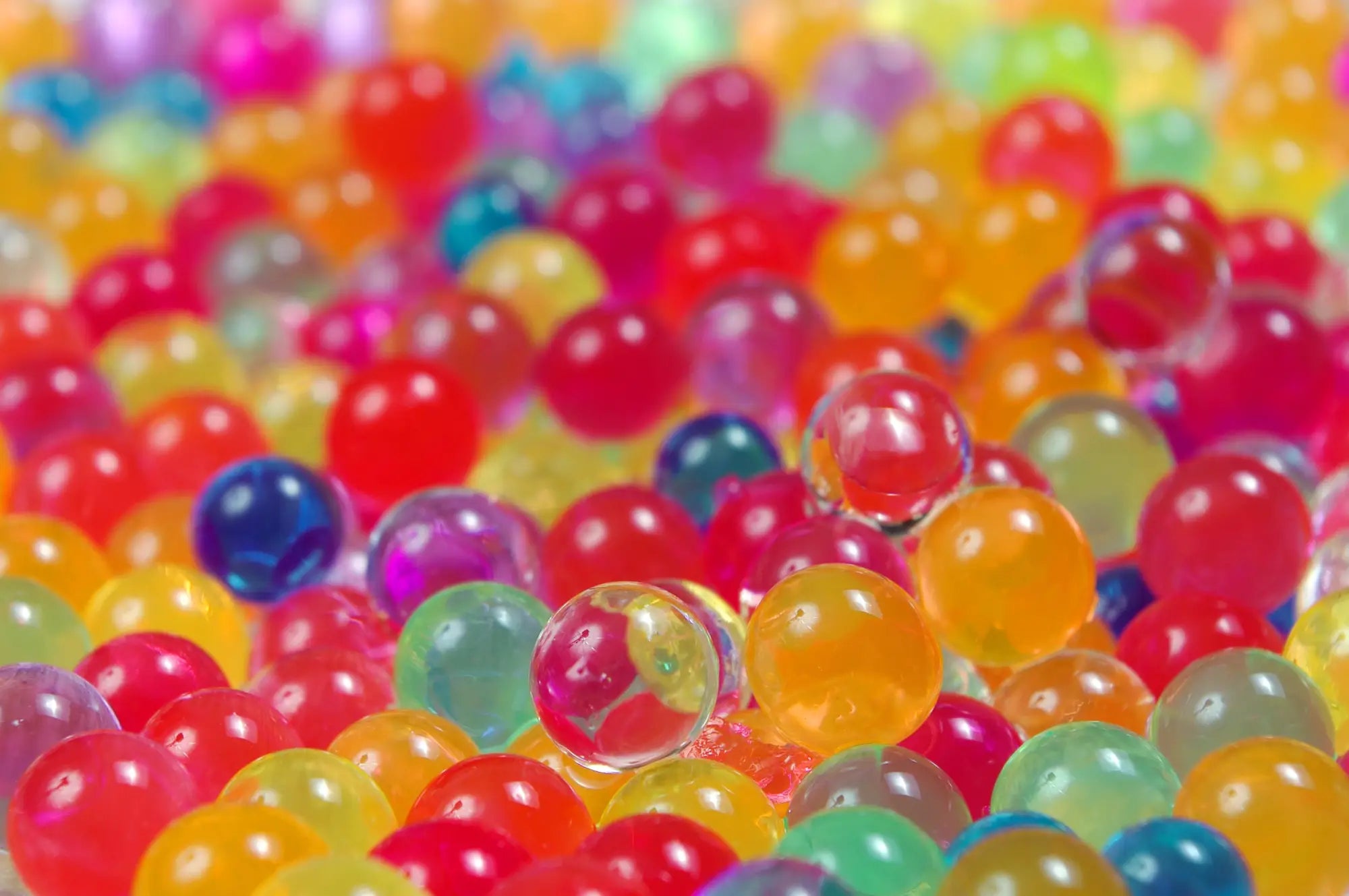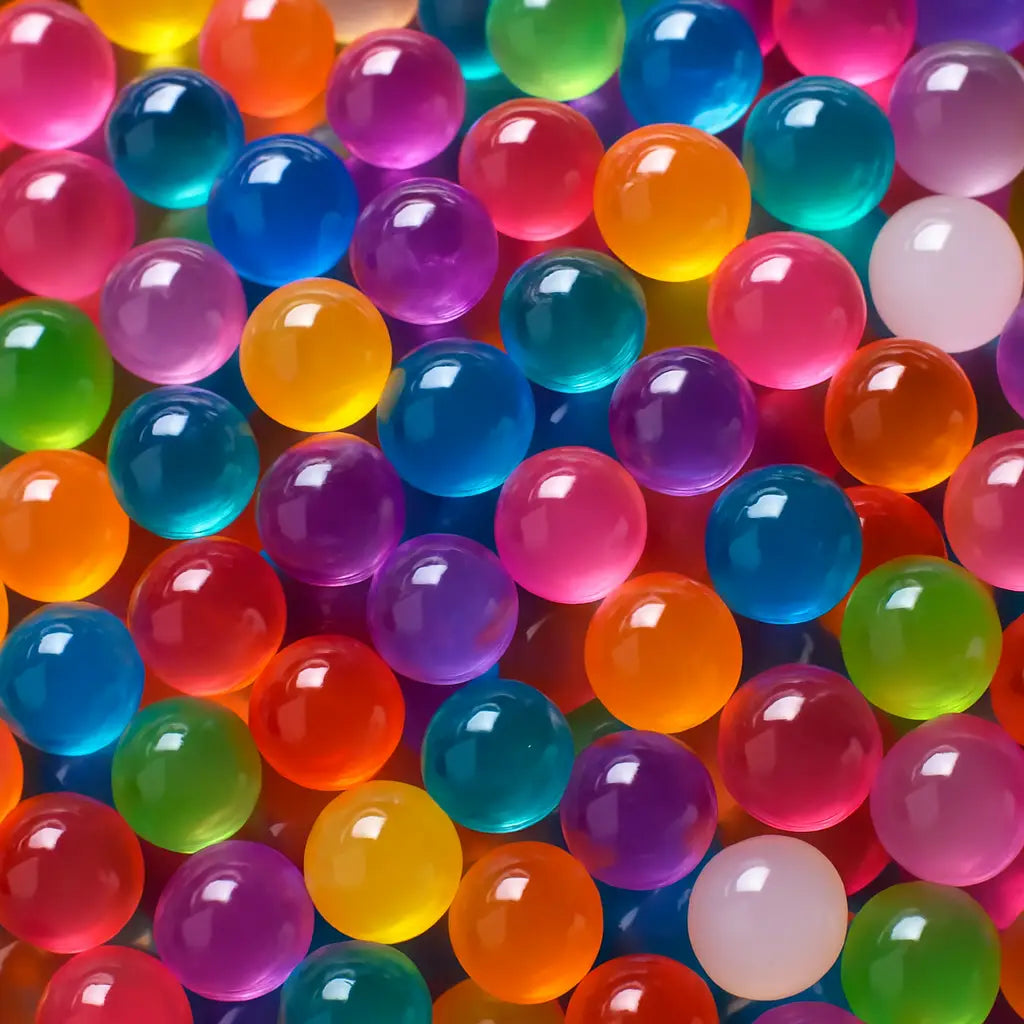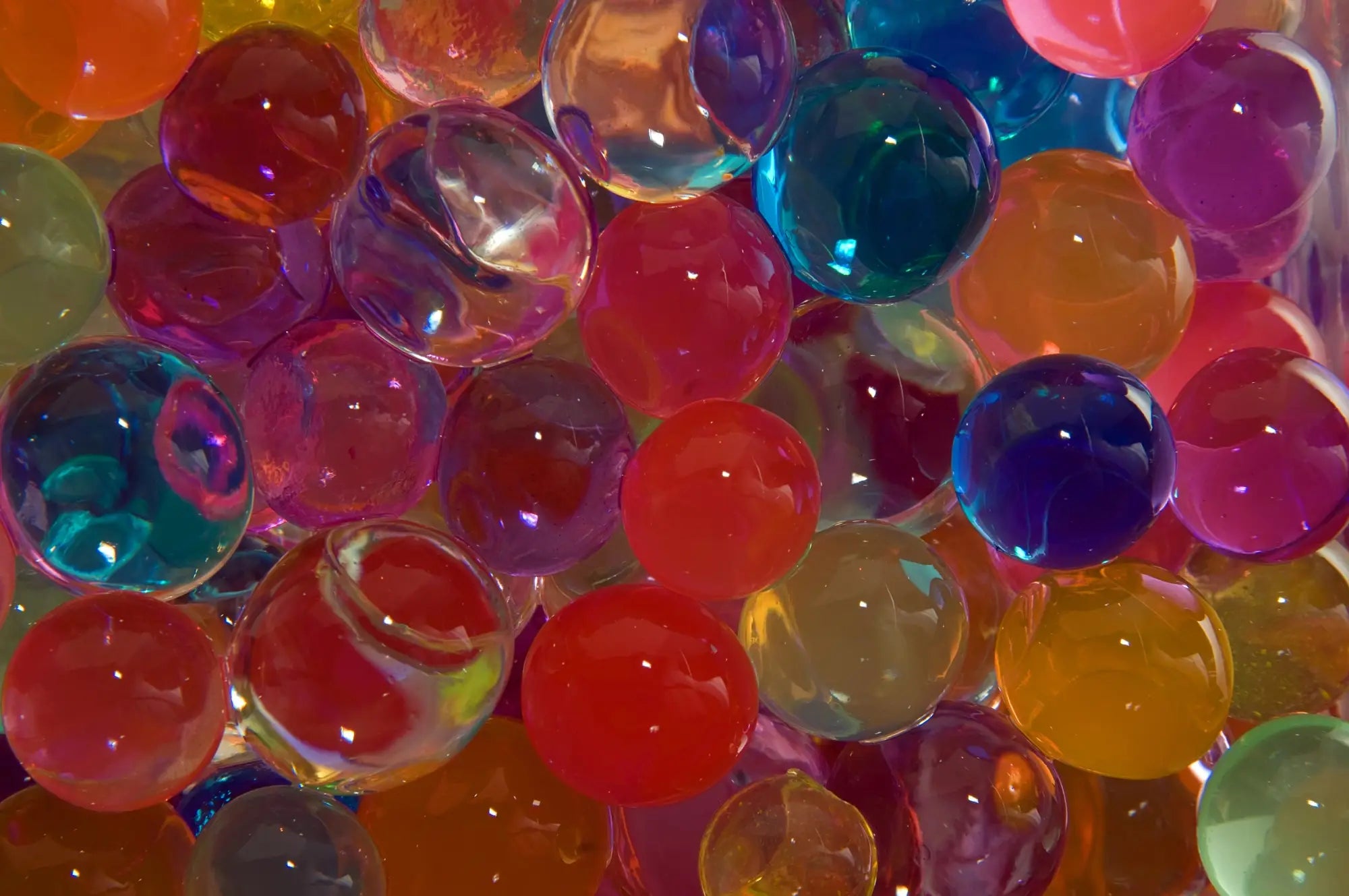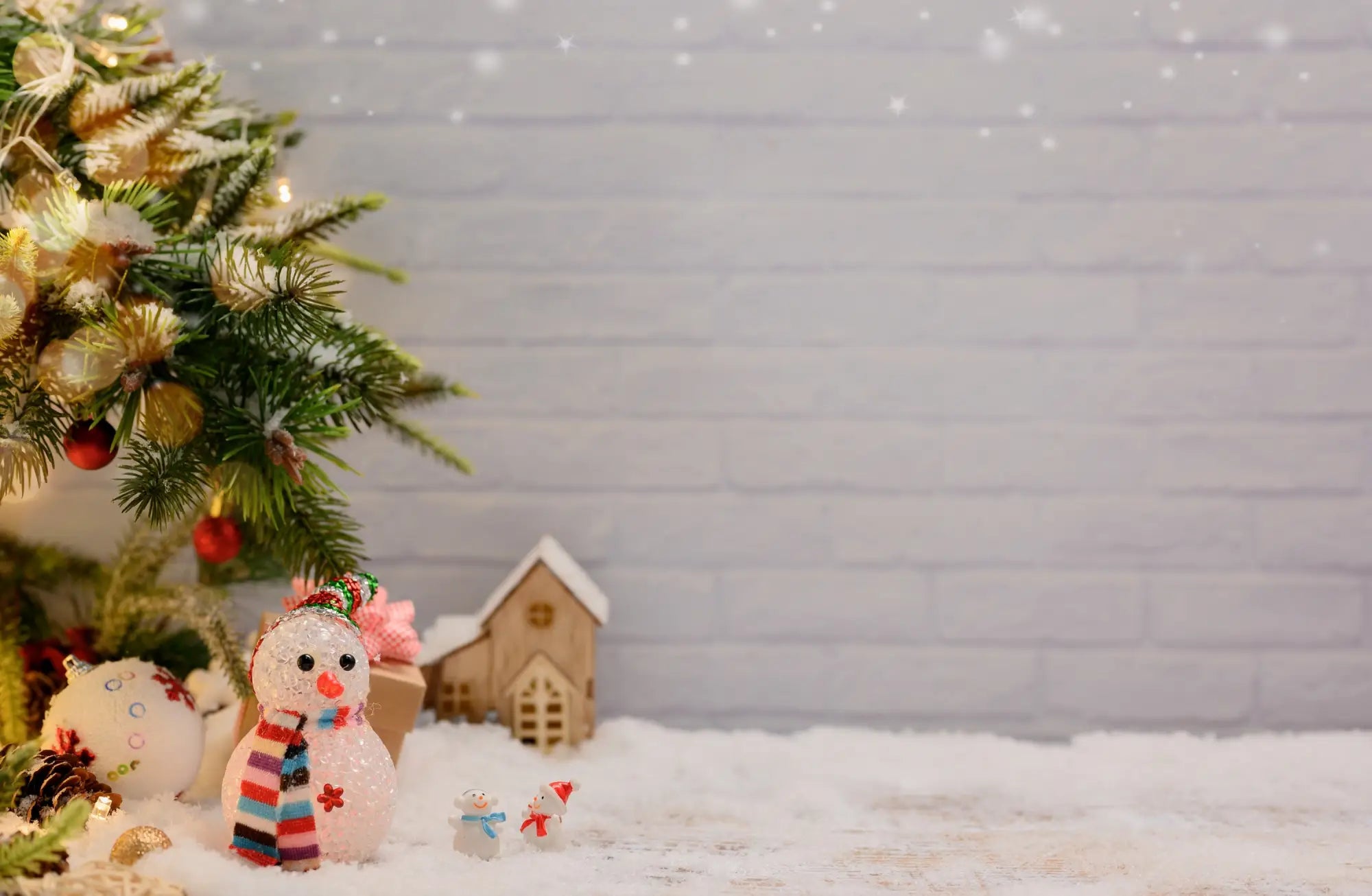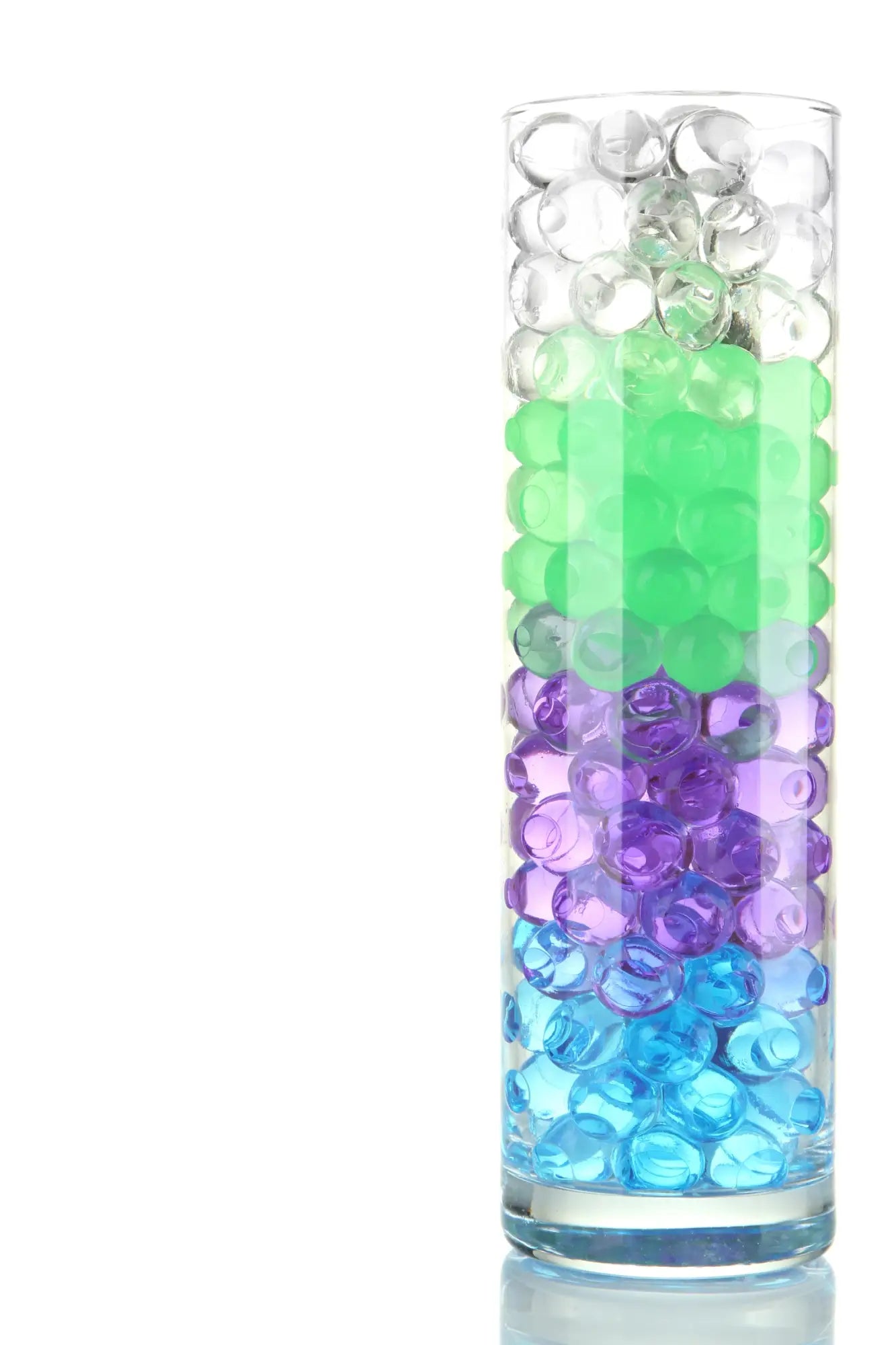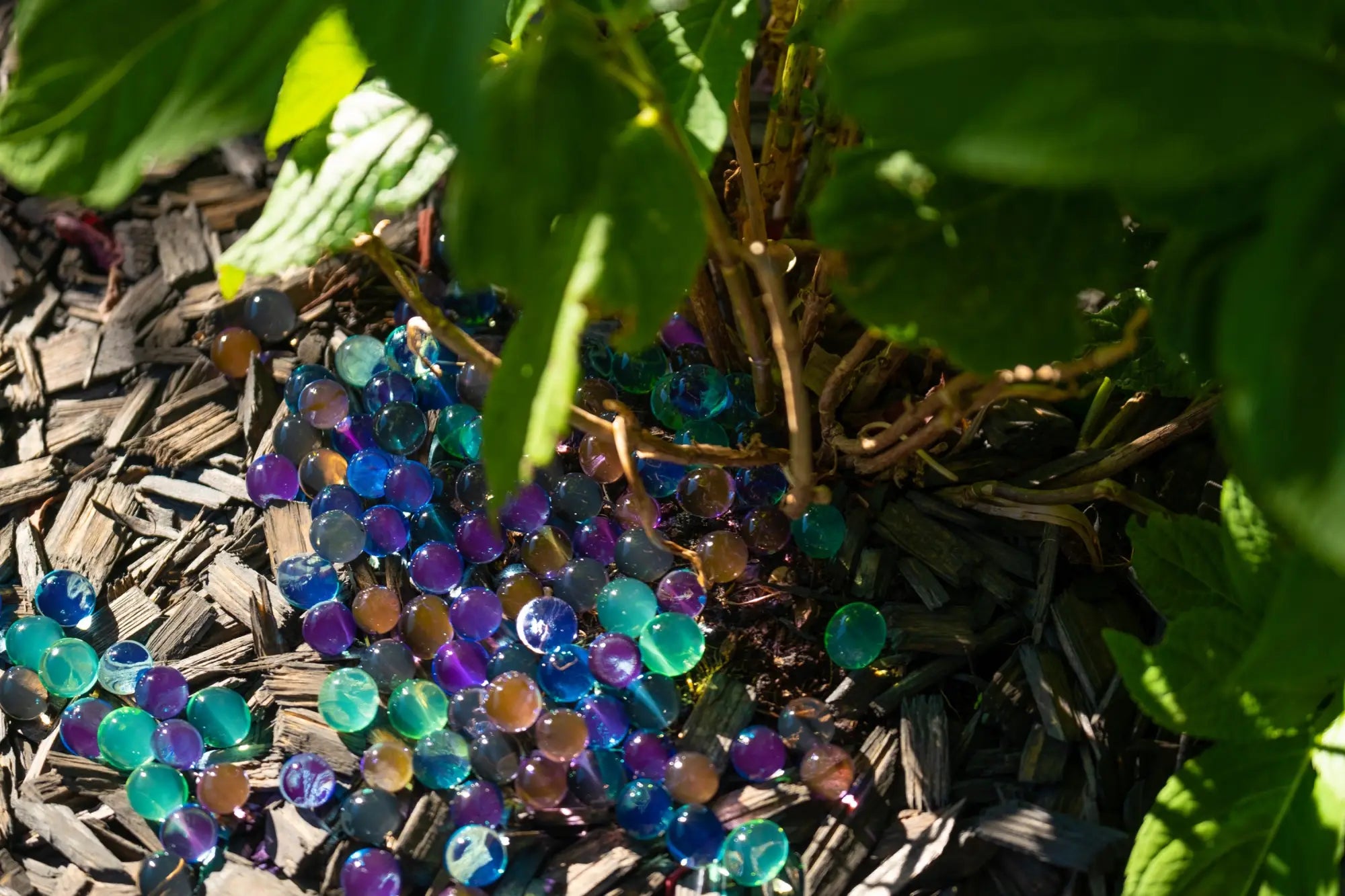If you’re new to water beads, you’re probably wondering; what are water beads? What are water beads made from? What are water beads made of?
Well, water beads are small, gel-like granules made of a water-absorbent polymer. Each bead is about half a centimetre, but because of their excellent water absorption ability. They have a semi-permeable membrane that allows water to pass through when exposed to water. A fully hydrated water bead is the size of a marble.
Water beads support plant growth on their own, meaning you don’t need soil. A growing number of homeowners are using water beads to grow plants because of the numerous benefits they offer. One of the main advantages of water beads is their ability to retain water, making it easier to keep plants hydrated for longer. You don’t have to worry about your plants wilting when you’re on vacation.
How Water Beads Work
Water beads are sold as dry crystals. They also come in different colours and sizes, and are a great alternative to traditional soil, especially for homeowners who grow indoor plants and garden plants with a high moisture demand. To use the beads, you must first soak them in water. The super-absorbent polymer absorbs water, transforming from a hard pallet into large, soft gel. It can take up to four hours for the beads to fully absorb water. And hoow much do water beads expand? They can grow up to 150 time the size of their original size.
When beads absorb enough water, they take on a translucent look, which enhances their visual appeal. They can store water for extended periods, releasing it slowly as needed. This process can take days or even months, providing constant supply of the much needed water to keep your pants hydrated. This also helps to prevent overwatering, which often leads to root rot.
When the beads lose water, they start shrinking. Therefore, the best time to water your plants is when the top layer of beads in the container starts drying. Water beads can easily attract the attention of pets and children, so ensure that you keep them in a safe and secure place.
Who Can Use Water Beads?
You may probably wonder why you should use water beads when you can collect some soil from your backyard and grow your plants. Well, besides being the new trend, water beads are incredibly fun and easy to use. Growing plants in water beads is good for you if:
- You’re tired of watering your plants regularly
In today’s fast-paced world, people are always on the move, and it’s easy to forget crucial things like watering plants. Water beads have immense water absorption and retention ability, releasing it slowly as needed. This way, your plants get a constant supply of water even when you’re out of town.
- You have allergies
Many homeowners don’t know that the soil can be a breeding ground for mould. When the soil or container is disrupted, mould spores are released into the surrounding environment, causing allergic reactions for people who have allergies. With water beads, you don’t have to worry about allergies.
- You’re looking for a less messy medium
Traditional soil potting can be messy. This could be as a result of drainage issues, the presence of pests, and dust generation. Water beads are less messy as they do not produce dirt, do not harbour pests, and are easy to clean up.
Using Water Beads for Plants – Best Practices
When using water beads to grow plants, there are a few things to keep in mind to ensure proper usage and healthy growth of plants. Here are tips to take into account.
Choose the right beads
Beads come in different sizes and colours. Choosing the right size for your plants can go a long way in ensuring successful application. It's best to only use beads that have been labelled as non-toxic. Some beads have chemicals and dyes that could harm your plants. You also need to use the right quantity of beads. If the beads are too few, your plants won't get enough moisture. If there are too many, your plant's roots will suffocate, leading to root rot.
Watering frequency
To ensure the healthy growth of plants, you must monitor and adjust your watering frequency as needed. Since water beads retain water for extended periods, you must know when to water your plants. Overwatering can reduce the level of oxygen in the pot, leading to suffocation of roots and eventually death of plants. It's therefore important to ensure moisture is within the recommended level. Using a container with tiny drainage holes may help prevent overwatering. The holes in the container drain away excess water.
Safe handling
Proper handling of water beads is vital in preventing harm and injury. Be sure to wash your hands before and after touching the beads. Additionally, dry beads should be kept in a cool and dry place.
What Are Water Beads Used For?
Water beads are a fun and easy-to-use product. Besides serving as a medium in which plants grow, water can be used for decoration and kids' sensory play. Below, we take a closer look at the two ways of using water beads.
Using water beads as a decorative element
It's not uncommon to see water beads at weddings, parties, baby showers, and other events. Available in a multitude of colours, water beads can be used to add visual interest to a room or space. There’s a wide range of decoration ideas you can try. For example, you can use submersible LED lights in a jar filled with water beads to create a soft, glowing effect that soothes the eyes. When illuminated, the various colors of water beads can add a lively vibe to a space.
Using water beads for kids’ play
Water beads have a smooth, slippery texture, which makes them fun for kids to play with. Kids enjoy watching the beads grow from tiny objects to bigger, gel-like balls. They are also great for stimulating a child's senses through sensory play activities. These activities, which involve creating, exploring, and investigating, boost cognitive skills, promote independent thinking, and enhance memory skills. You must however monitor your kids to ensure they don't put the beads in their mouths. It's best to only allow kids aged 4 and above to play with beads. Still, you must supervise any play activities that involve beads.

